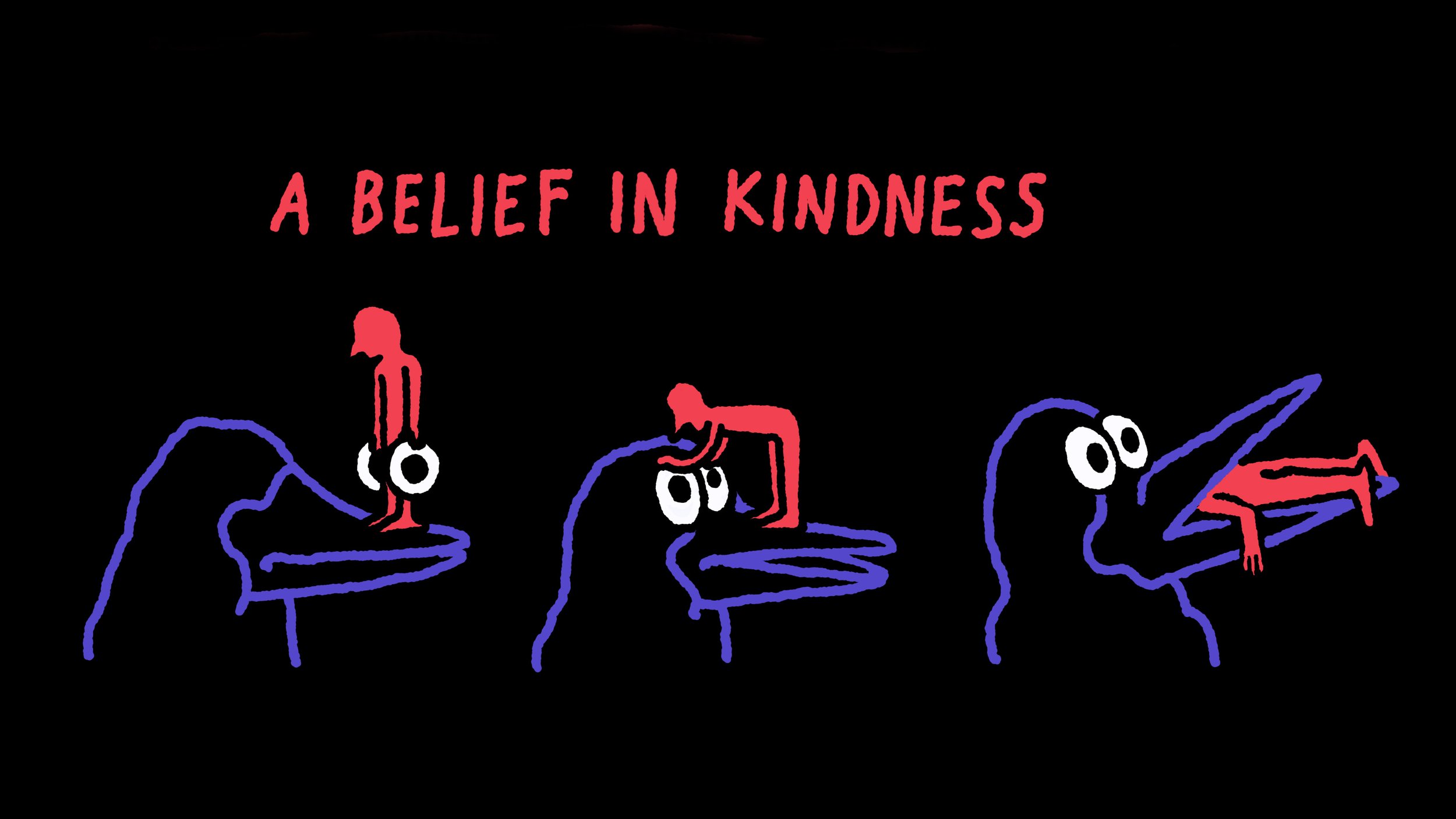A Belief in Kindness
An emotive motif (illustration: Leonhard Rothmoser).
There is a lot happening in Everything Everywhere All at Once, the arthouse sleeper hit from directors Daniel Kwan and Daniel Scheinert. There are onyx butt-plug trophies, erotic sausage-fingers, dogs used as nunchucks – all set across a gazillion universes. Amongst all of this, however, is a deceptively simple object that comes to represent the spiritual message of the movie – the googly eye.
We first see googly eyes early in the movie, when Waymond Wang (Ke Huy Quan) sticks them to laundry bags in an attempt to bring some levity to the daily stress of his wife, Evelyn (Michelle Yeoh). At this point, however, Evelyn has no time for whimsy and simply brushes off Waymond’s plastic interventions: they serve no function in Evelyn’s world of laundry and taxes.
For all the googly eye’s famliarity, no one seems to know who invented it. There is no patent, no record of a designer. At most, there is the early 20th-century comic strip character, Barney Google, whose hallmark gaze brought the term into the mainstream. There is also the Weepul, invented after a bored toy factory heir glued googly eyes to a cotton ball: a design typically credited as the first to maifest the wobbly gaze in a physical medium.
“In our own universe, there were reports of googly eye shortages following the film’s release, with fans raiding craft stores to get their fix.”
Googly eyes are an emotive motif that runs through the core of Everything Everywhere. As Evelyn is introduced to the multiverse that is central to the movie, she begins to see Waymond differently. Amongst Evelyn’s multiversally misguided decisions and their daughter Joy’s (Stephanie Hsu) fast descent into nihilism, Waymond’s kindness moves from childish play to a source of strength. In cinema’s most tear-jerking silent conversation, in which Joy and Evelyn are embodied as two rocks, Everything Everywhere gives both boulders googly eyes. It’s just the two of them, but it’s the kitschy eyes – symbolising Waymond’s presence and, therefore, the presence of empathy – that allows the rocks to see each other.
Comedy pieces of plastic tat come to embody a love that can span a million parallel universes in the film’s climactic fight scene between Evelyn and Jobu Tupaki, Joy’s alter ego. During the fight, Evelyn attaches a single googly eye to the centre of her forehead – the third eye. Usually invisible, the third eye represents extraordinary vision and perception. The googly eye is about as non-traditional a third eye as you can get, yet Evelyn is now able to replicate Waymond’s belief in kindness. Evelyn fights off Jobu’s followers with empathy, eyes exploding from her body as she sees them for who they are. Jobu, by contrast, sports a bagel topknot. It’s a black circle vs. a black bagel; a central solid vs. a central void. Jobu’s bagel has everything on it, and nothing at its heart.
The googly eye is nothing except heart. In our own universe, there were reports of googly eye shortages following the film’s release, with fans raiding craft stores to get their fix. This demand may suggest that kindness could be all around us, yet the object’s plastic reality also offers a warning: kindness can become disposable. It is a teetering perception. Perhaps the world’s googly eye shortage is because of supply-chains issues; or perhaps it’s because everyone everywhere is seeking kindness all at once.
Words Sharon Lam
Illustrations Leonhard Rothmoser
This article was originally published in Disegno #34. To buy the issue, or subscribe to the journal, please visit the online shop.

